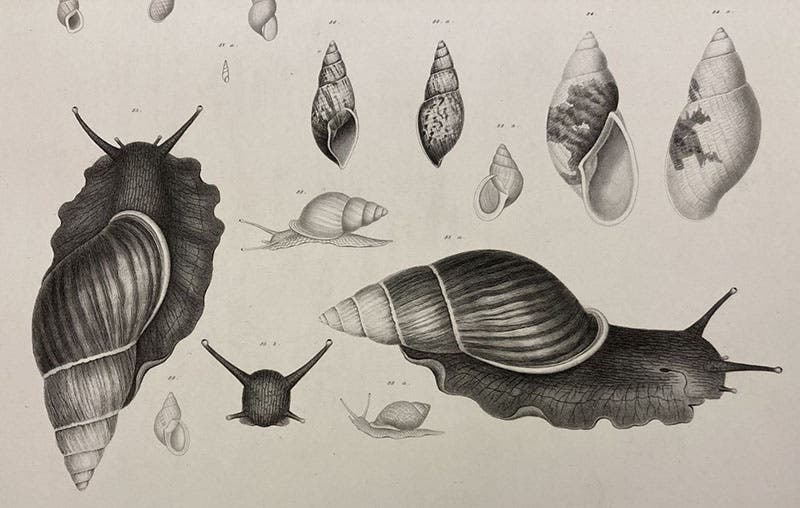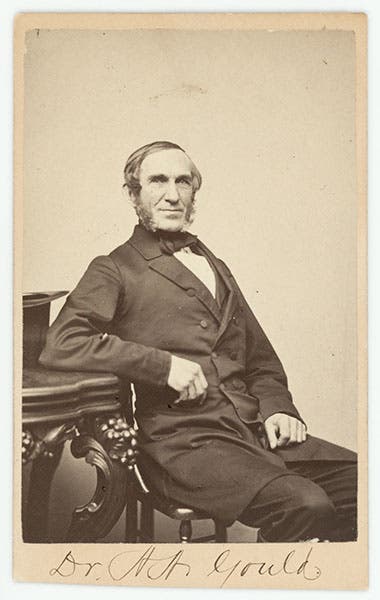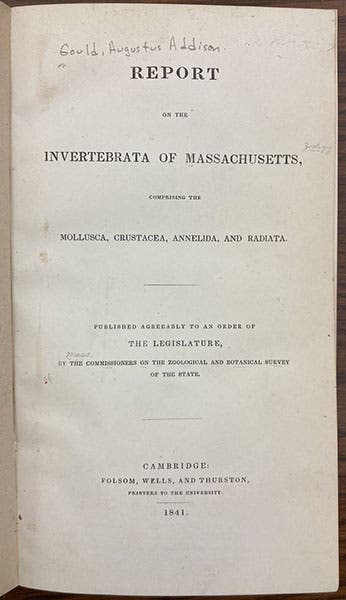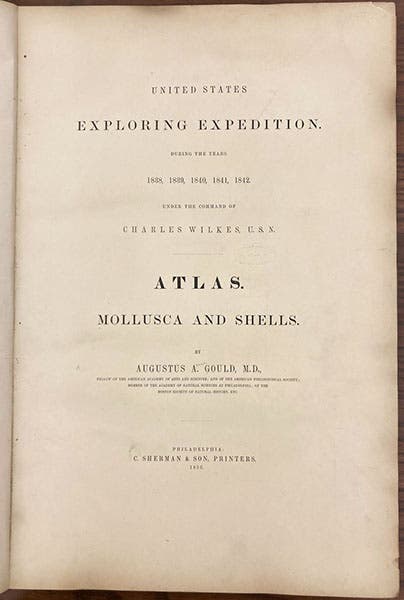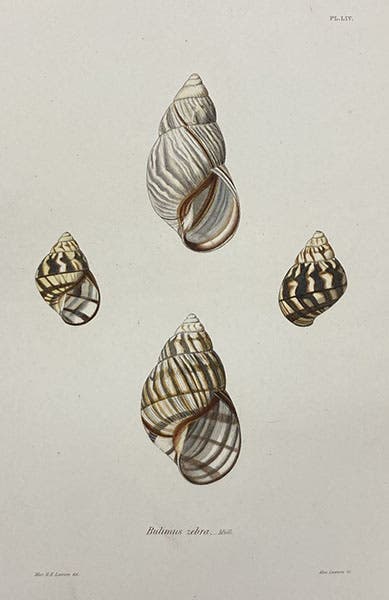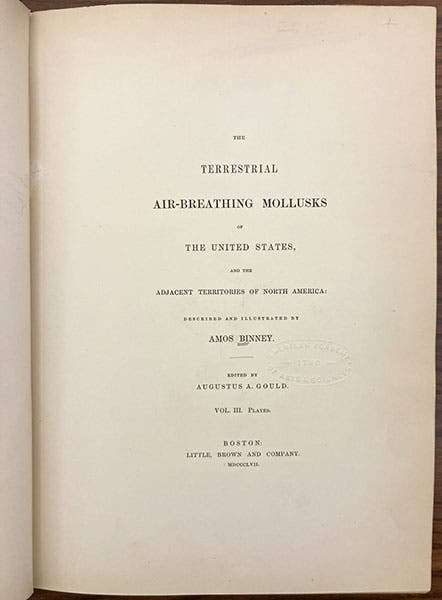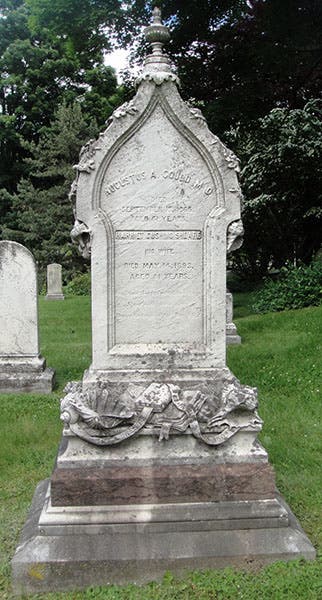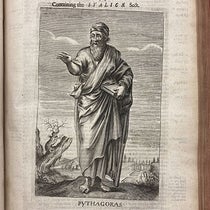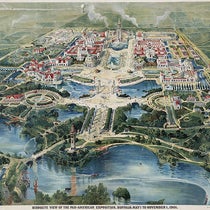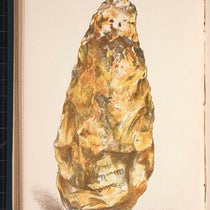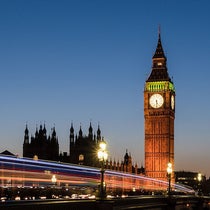Scientist of the Day - Augustus A. Gould
Augustus A. Gould – Scientist of the Day
Augustus Addison Gould, an American zoologist, malacologist (expert on mollusks) and conchologist (expert on shells), was born Apr. 23, 1805, in New Ipswich, New Hampshire. He attended Harvard college, received his medical degree in 1830, and set up a medical practice in Boston, where he managed to thrive amidst stiff competition (competing with all the other Harvard MDs who wanted to stay in Boston).
But Gould's real passion seems to have been the study of mollusks and shells. I don't know how he picked up that interest – there was really no one versed in those fields at Harvard when he was there (Louis Agassiz did not arrive at Harvard until 1847). But he established a reputation worldwide as a malacologist, perhaps because of his Report on Invertbrata that he wrote and published for the Zoological and Botanical Survey of the State of Massachusetts in 1841, a book that we have in our Library. It is a modest large-octavo volume with 15 plates at the end, each with at least 20 figures. The titlepage says it encompasses “Mollusca, Crustacea, Annelida, and Radiata,” but in fact nearly every species shown and discussed is a mollusk. I include a photo of a page of text on Cirripedes (barnacles), with an attractive wood engraving of a barnacle, but note that they fall here under the rubric Mollusca (fourth image). Had he written his book 13 years later, after Darwin published his volumes on Cirripedia, Gould would have known that barnacles are not mollusks, but crustaceans, and more closely related to shrimp than clams.
But Gould's best known (and largest) book is the one he did for the U.S. government. The United States Exploring Expedition (the US Ex Ex) had set out on the country's first officially sponsored scientific voyage in 1838, under the command of Lt. Charles Wilkes (we wrote a post on Wilkes – our second one – just three weeks ago). The ships returned in 1842 with an enormous number of specimens, which were farmed out to various experts for study and publication. Gould got the mollusks and shells, and although it took him a while, he eventually published a large text volume and an oversized folio atlas of plates. The plates, 57 of them, are colored in some copies, but not ours. We show a detail of one plate, depicting several snails out for a Sunday stroll with their mantles spread out beneath them (first image). These plates are extraordinarily well engraved, as the detail shows.
A third work by Gould that I thought I would mention is one called: The Terrestrial Air-breathing Mollusks of the United States. This was originally a private publication begun by Amos Binney. But Binney died suddenly in 1846, after writing but before publishing the first volume of text. Binney had also commissioned the illustrations, but his artist died at about the same time as Binney. Gould agreed to edit the volumes for publication; the text was easy, since it was already written, but most of the illustrations had to be commissioned again. They appear in volume 3, published in 1857. They are quite exquisite, tiny engravings on large pages. Interestingly, the engravings were printed twice, once in black and white, and once in color, and they were paired up when the volume was bound, with the black-and-white on the left and the colored print on the right, separated by pieces of tissue paper. We show two of the colored plates as our sixth and seventh images just above, and the pages on which they appear are about twice as large as what we show here.
Gould died in Boston on Sep. 15, 1866. He was buried in Mount Auburn Cemetery, a hallowed ground he shares with at least 20 other noted American scientists, including Nathaniel Bowditch, Asa Gray, and Jules Marcou (ninth image).
William B. Ashworth, Jr., Consultant for the History of Science, Linda Hall Library and Associate Professor emeritus, Department of History, University of Missouri-Kansas City. Comments or corrections are welcome; please direct to ashworthw@umkc.edu.


